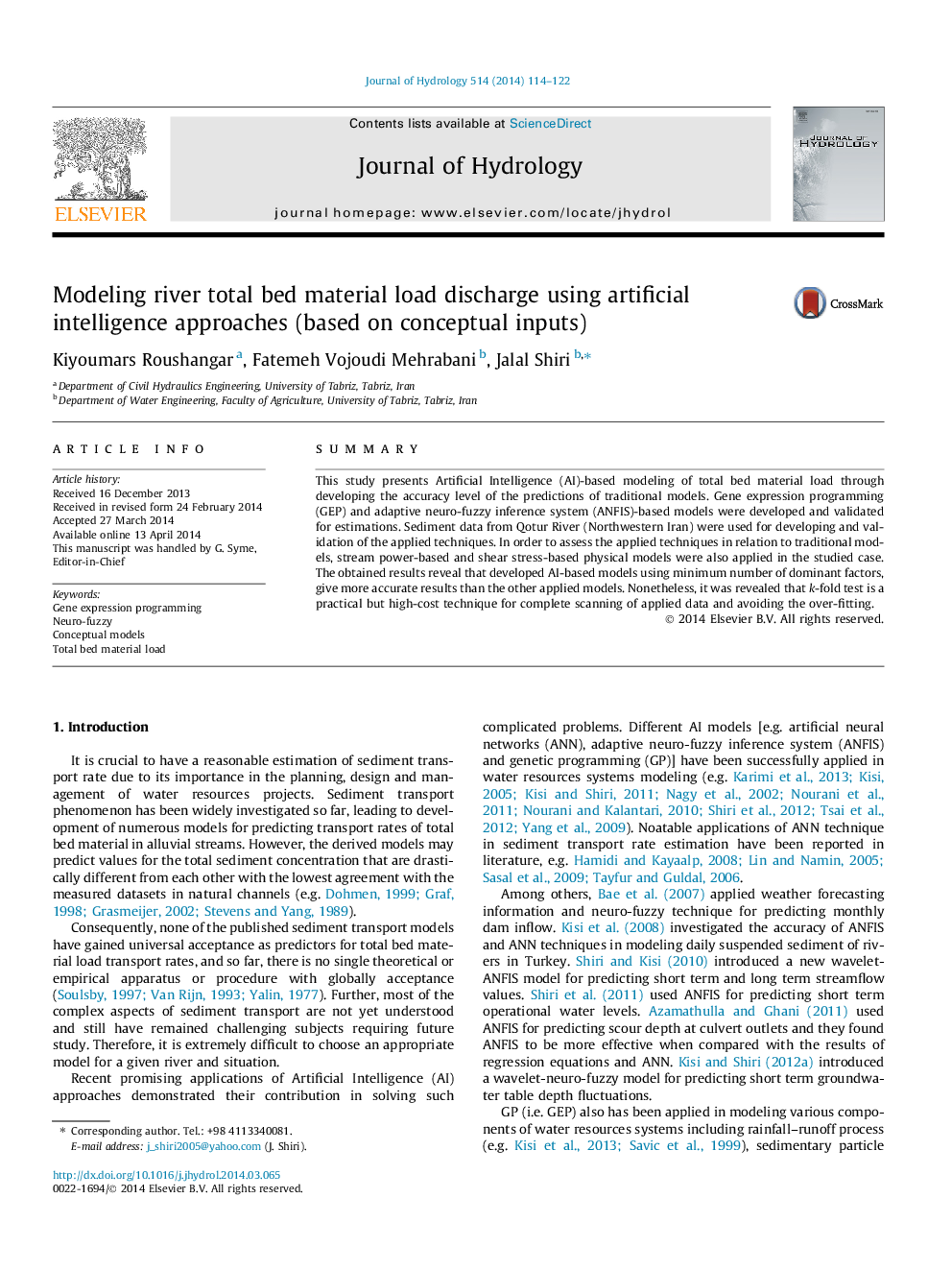| Article ID | Journal | Published Year | Pages | File Type |
|---|---|---|---|---|
| 4576006 | Journal of Hydrology | 2014 | 9 Pages |
•We modeled total bed material load using GP and ANFIS.•GP and ANFIS are compared with corresponding physical models.•The obtained results showed the superiority of GP and ANFIS.•t-Test confirmed the superiority of GP over other models.
SummaryThis study presents Artificial Intelligence (AI)-based modeling of total bed material load through developing the accuracy level of the predictions of traditional models. Gene expression programming (GEP) and adaptive neuro-fuzzy inference system (ANFIS)-based models were developed and validated for estimations. Sediment data from Qotur River (Northwestern Iran) were used for developing and validation of the applied techniques. In order to assess the applied techniques in relation to traditional models, stream power-based and shear stress-based physical models were also applied in the studied case. The obtained results reveal that developed AI-based models using minimum number of dominant factors, give more accurate results than the other applied models. Nonetheless, it was revealed that k-fold test is a practical but high-cost technique for complete scanning of applied data and avoiding the over-fitting.
